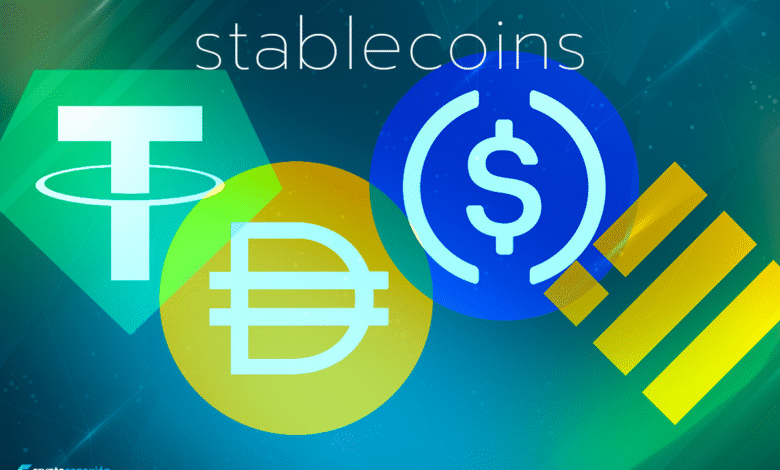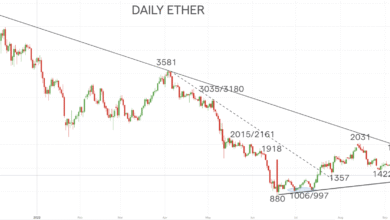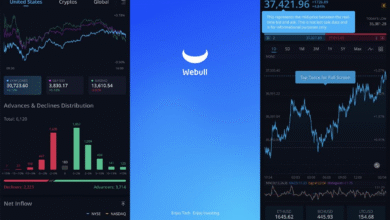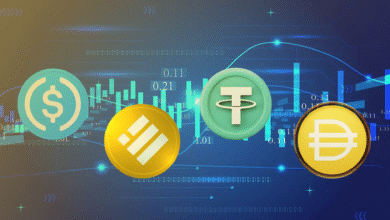Stablecoins: JPMorgan Reports $27T Processed in 2024

Stablecoins are at the forefront of the financial revolution, acting as a bridge between digital currencies and traditional finance. As reported by JPMorgan, these innovative blockchain-based tokens processed an astounding $27 trillion in 2024, underscoring their growing influence within the financial landscape. The emergence of stablecoins, which are pegged to fiat currencies like the U.S. dollar, is coinciding with a notable rise in the integration of tokenized real-world assets. This convergence is attracting attention from major financial institutions, as highlighted in the recent JPMorgan stablecoins report. The ongoing growth of the stablecoins market marks a pivotal moment in digital assets integration, demonstrating the potential for stablecoins to redefine conventional financial systems and enhance transaction efficiency.
Digital dollar tokens, often referred to as stablecoins, are reshaping the financial ecosystem by offering a stable alternative to volatile cryptocurrencies. The melding of these digital assets with traditional banking systems is gaining traction, driven by significant partnerships and technological innovations. Notably, the interest in tokenized assets reflects a broader trend toward creating resilient financial solutions that can streamline operations and improve liquidity. As notable investment banks explore this territory, the path ahead for digital tokens and their role in established financial frameworks becomes increasingly clear. This evolving landscape highlights the importance of stable financial instruments in a rapidly digitizing economy.
The Rise of Stablecoins in Traditional Finance
In recent years, stablecoins have emerged as a pivotal component in the fusion of digital assets with traditional finance. According to a report by JPMorgan, stablecoins had an astonishing transaction volume of over $27 trillion in 2024, indicating their significant uptake and recognition among institutional and retail investors alike. Their growth can be attributed to their inherent stability, as they are pegged to fiat currencies such as the U.S. dollar, making them an appealing choice for transactions and investments in a volatile market.
As major players in the finance sector begin integrating stablecoins, the landscape is transforming. Institutions like Goldman Sachs and Bank of New York Mellon are exploring ways to tokenize real-world assets, facilitating smoother transactions and improving liquidity across various market segments. JPMorgan’s report underlines the importance of a robust regulatory framework, as future legislation, including the GENIUS Act, aims to establish clearer guidelines for the use of stablecoins in financial systems.
Tokenized Real-World Assets: Bridging Gap to Traditional Markets
The tokenization of real-world assets (RWAs) has gained momentum alongside the rise of stablecoins, presenting new opportunities for investors and financial institutions. JPMorgan’s insights highlight a significant collaboration between major banks to facilitate this process, emphasizing the expected benefits of increased efficiency and liquidity in money-market funds that total over $7 trillion. By transforming these assets into digital tokens, institutions can offer more accessibility to a broader range of investors, enhancing market participation.
Moreover, the successful deployment of tokenized assets can potentially reshape traditional financial infrastructure, allowing for quicker transactions and smoother compliance with regulatory standards. Companies like BlackRock and Franklin Templeton leading the charge in tokenized money-market funds are examples of how RWAs will seamlessly integrate into the growing ecosystem of digital finance. This shift not only highlights the versatility of capital markets but also signifies a broader acceptance of blockchain technology in mainstream finance.
JPMorgan’s Strategic Initiatives in Digital Finance
Amidst the evolving financial landscape brought by digital assets, JPMorgan has adapted its strategies to embrace blockchain initiatives actively. Their Kinexys unit is at the forefront, launching projects that leverage stablecoins for a variety of functionalities. For instance, the development of the Tokenized Collateral Network (TCN) signifies a strategic move towards utilizing stablecoins as efficient collateral in transactions involving real-world assets, thus showcasing their critical role in bridging traditional finance with modern digital practices.
Moreover, initiatives like JPMD, a tokenized deposit service offered on Coinbase’s Base chain, underscore the bank’s commitment to driving innovation in digital finance. By integrating these stablecoin-based solutions, JPMorgan not only enhances their service offerings but also positions themselves as pioneers in a sector that could redefine financial operations. Such forward-thinking approaches are essential for maintaining relevance in a rapidly changing economic environment, signaling JPMorgan’s alignment with the future of finance.
Market Growth of Stablecoins and Future Predictions
The stablecoin market has witnessed exponential growth, with projections indicating it could evolve into a trillion-dollar asset class post-2028. However, JPMorgan approaches this estimate with caution, foreseeing a more conservative market valuation of $500 billion, primarily due to regulatory challenges and geopolitical uncertainties that could impact adoption rates. This conservative perspective reflects an awareness of the complexities associated with integrating stablecoins into existing financial infrastructures.
Furthermore, as stablecoins become more prevalent within traditional finance, their applications are expected to diversify. Enhanced transaction speeds, lower costs, and greater security brought about by these digital assets can potentially attract a wider audience, from casual users to institutional investors. Nevertheless, the path forward will heavily rely on cohesive regulatory guidelines and the ability of institutions to adapt to these revolutionary changes within the finance sector.
Institutional Adoption of Stablecoins and Digital Assets
The adoption of stablecoins by major financial institutions marks a significant shift in the perception and utilization of digital assets in the banking sector. With companies like Visa, Mastercard, and PayPal endorsing stablecoin transactions, the normalization of these assets in everyday financial activities enhances consumer confidence and legitimizes their role in the broader financial ecosystem. This institutional backing is crucial for stability and growth in the market, as it fosters an environment where digital currencies can thrive.
Furthermore, the collaboration between banks and digital asset platforms is paving the way for innovative financial solutions that leverage both traditional and digital currencies. The move towards integrating stablecoins within existing payment systems not only streamlines transactions but also represents a paradigm shift in payment processing, highlighting a future where digital assets play a fundamental role in formal finance.
Impact of Regulatory Changes on the Stablecoin Market
The evolving regulatory landscape surrounding stablecoins is a critical factor influencing their growth and integration into traditional finance. As policies like the GENIUS Act aim to provide clarity and legal protections for digital assets, stakeholders are now more empowered to innovate within a regulated framework. This foundational clarity is essential for investor confidence and paves the way for broader acceptance of stablecoins in various financial applications.
However, navigating these regulatory waters poses challenges and uncertainties for financial institutions looking to embrace stablecoins and other digital assets. JPMorgan’s cautious predictions about the stablecoin market reflect the complexities and potential risks associated with regulatory changes. Understanding how these regulations will unfold will be key for investors and institutions seeking to capitalize on the opportunities presented by stablecoins.
The Future of Payment Systems with Stablecoins
As stablecoins gain traction in the financial landscape, their potential to revolutionize payment systems is becoming increasingly evident. By offering faster settlement times, reduced transaction costs, and increased security, stablecoins are positioning themselves as a preferred option for both consumers and businesses alike. The integration of stablecoins into various payment gateways and platforms signals a shift towards more modern payment systems that cater to the demand for efficiency in the digital age.
Additionally, the use of stablecoins in cross-border transactions is particularly noteworthy, as they can simplify processes that are often bogged down by traditional banking protocols. By enabling instantaneous transactions that bypass the lengthy processing times of banks, stablecoins hold the promise of transforming how money moves globally. This evolution in payment systems could lead to a significant decrease in transaction fees and faster access to funds for individuals and businesses.
Challenges Facing the Growth of Stablecoins
Despite the optimistic projections surrounding stablecoins, their growth narrative is not without obstacles. Regulatory hurdles pose one of the most significant challenges, as inconsistencies in global regulations can impede the widespread adoption of stablecoins and tokenized assets. Institutions must navigate these complex regulatory environments, which can vary significantly from one jurisdiction to another, potentially stifling innovation.
Another challenge lies in public perception and understanding of stablecoins. While their benefits are numerous, misinformation and skepticism remain prevalent among potential users. Educating both consumers and businesses about the advantages and functionalities of stablecoins is essential for fostering trust and driving adoption. As institutions clarify their roles and enhance user engagement, overcoming these challenges will be pivotal for the future success of stablecoins.
Analyzing the Competitive Landscape of Stablecoins
With the rapid growth in the stablecoin market, competition is intensifying among various digital assets. Numerous projects and platforms are vying for dominance, each offering unique features that appeal to different market segments. This competitive landscape is beneficial for consumers, as it drives innovation and encourages further advancements in the technology and use cases for stablecoins.
However, as new entrants emerge alongside established players, market participants must stay vigilant about the differentiation of their offerings. The success of stablecoins will largely depend on their ability to address the needs of businesses and consumers, ranging from reliability to ease of use. Understanding competitive dynamics will be crucial for investors and institutions as they navigate this rapidly evolving space.
Frequently Asked Questions
What role do stablecoins play in traditional finance according to the JPMorgan report?
According to the JPMorgan report, stablecoins are playing a pivotal role in traditional finance by processing over $27 trillion in transactions in 2024. This integration reflects a growing confidence among institutional players and highlights the convergence of digital assets with traditional financial systems.
How has the stablecoins market grown recently as highlighted by JPMorgan?
The stablecoins market has experienced significant growth, processing more than $27 trillion in 2024, which surpasses the total transaction volumes of major payment processors like Visa and Mastercard. This evolution indicates increased acceptance and utilization within financial institutions.
What are tokenized real-world assets and their connection to stablecoins?
Tokenized real-world assets (RWAs) are physical assets represented in digital form on a blockchain. According to JPMorgan, stablecoins are increasingly being used for these transactions, facilitating the integration of RWAs into traditional finance, thereby enhancing liquidity and efficiency.
How have partnerships among financial institutions impacted the stablecoins landscape?
Recent partnerships, such as between Goldman Sachs and Bank of New York Mellon, have significantly impacted the stablecoins landscape by promoting the tokenization of money-market fund shares. This initiative, as noted in the JPMorgan report, represents a substantial advancement in the integration of digital assets with traditional finance.
What does JPMorgan predict about the future of stablecoins by 2028?
JPMorgan predicts that despite potential growth, the stablecoins market may reach approximately $500 billion by 2028. This conservative estimate takes into account regulatory challenges and geopolitical complexities, contrasting with more optimistic projections of a trillion-dollar asset class.
How are institutions like Visa and Mastercard utilizing stablecoins?
Institutions such as Visa and Mastercard are now using stablecoins for transactions, reflecting their growing trust in these digital assets. The integration, highlighted in the JPMorgan report, signifies a broader acceptance of stablecoins in everyday financial operations.
What regulatory developments have influenced the stablecoins market according to the JPMorgan analysis?
Regulatory developments, including the U.S. Senate’s GENIUS Act in 2025, have provided a clearer legal framework for stablecoins, influencing their integration into traditional finance. This legislative clarity is crucial for institutional adoption and confidence in digital assets.
What blockchain initiatives has JPMorgan undertaken regarding stablecoins?
JPMorgan has launched various blockchain initiatives through its Kinexys unit, including JPMD, a tokenized deposit for institutional clients, and the Tokenized Collateral Network (TCN), enabling real-world assets to function as blockchain-based collateral.
| Key Point | Details |
|---|---|
| Stablecoins Volume | Processed over $27 trillion in 2024, surpassing Visa and Mastercard combined. |
| Integration with Finance | JPMorgan reports growing adoption of stablecoins in traditional finance, with significant partnerships and developments. |
| Tokenization of Real-World Assets | Tokenized assets are being increasingly integrated into financial systems, such as money-market funds. |
| Institutional Use | Visa, Mastercard, and PayPal are now using stablecoins for transactions, indicating increasing institutional confidence. |
| Regulatory Developments | U.S. Senate’s GENIUS Act in 2025 clarified legal frameworks for stablecoins, promoting their use. |
| Market Predictions | JPMorgan anticipates a $500 billion market by 2028 for stablecoins, citing regulatory challenges. |
| JPMorgan Initiatives | Projects like JPMD and the Tokenized Collateral Network aim to promote the use of stablecoins and tokenized assets. |
Summary
Stablecoins are rapidly transforming the financial landscape, with huge processing volumes exceeding $27 trillion in 2024. As institutions increasingly adopt stablecoins into traditional finance, this trend underscores the merging of digital and conventional assets. Key partnerships and regulatory advancements signal a growing confidence in the stability and utility of these assets. However, challenges remain as JPMorgan projects a conservative market growth, underscoring the need for continuous adaptation and regulatory clarity in this evolving sector.




